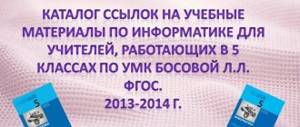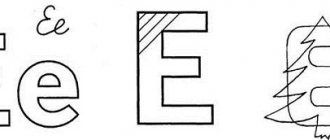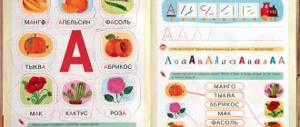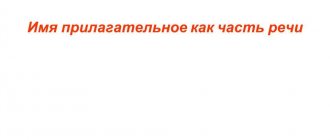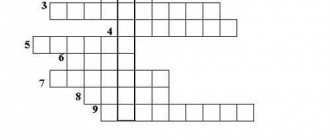There is probably not a single modern person who does not know the Pascal language (the basics of programming). And this is not surprising! The most basic concepts of this unique program are described in the computer science textbook for schoolchildren.
Now, in the age of information technology, everyone can teach themselves a tutorial online (by taking the courses “Learning programming languages from scratch”; “Pascal for dummies” and others).
The history of the language being studied is not so simple: Pascal underwent many changes before schoolchildren saw it in the form in which it is taught in the classroom. It was the very first simple language (ord pascal) for programming, helping to solve many practical problems of the last century (1970). It was developed by a group of scientists.
As platforms expanded, new versions of this program were created, and Pascal became a classic programming language.
Below we will look at what Pascal is and what its main tools are. Let's consider the operations and functions of the program, its specific features. Let's use examples to understand how it works. Let's learn to write and work in Pascal.
Features of the PascalABC.NET system
Everything is learned by comparison, so let’s consider the advantages of this program in relation to another BASIC language.
So, what is typical for the Pascal language and what is not suitable for BASIC:
- Firstly, the presence of a compiler that allows you to download Pascal to any platform.
- Secondly, all versions of this program are compatible with each other.
- Thirdly, structured data types help the programmer to accurately compose the necessary algorithm for solving a practical problem, while protecting it.
- Fourthly, the clarity and logic of the program interface: all commands are simple and understandable.
- Fifthly, switching to another, higher-level programming language is quite simple.
Java - James Gosling
James Gosling
Java is one of the most popular and successful programming languages. Java was created by Dr. James Arthur Gosling. He is known as the "Father of Java".
Initially, Java was developed and supported by Sun Microsystems. Since January 2010, after Sun was bought by Oracle, Oracle has been doing this.
Java is based on the WORA (Write Once Run Anywhere) principle. Java's platform independence has become one of the fundamental reasons for the success of this language in the corporate environment.
Currently, Java is one of the most popular languages. If you want to learn Java, take a look at this training course.
Pascal for Beginners - Basic Concepts
Let's look at the basic concepts that help to correctly write a program in this language.
Workspace
What does the workspace look like?
Now let's look at the basics: the alphabet and structure.
Alphabet Pascal
What do you need to know? An alphabet is a set of symbols needed when composing a program.
What they include:
- Latin uppercase, lowercase letters (A, B, C....a,b,c).
- Arithmetic symbols (0, 1, 2...).
- Special characters (punctuation, parentheses, quotation marks, arithmetic signs, etc.).
- Indivisible symbols (:=, ˃=…).
- Function words:
- and – and;
- array – array;
- begin – beginning;
- do – execute;
- else - otherwise;
- for – for;
- if – if;
- of – from;
- or – or;
- procedure – procedure;
- program – program;
- repeat – repeat;
- then – that;
- to – before;
- until – until (= while);
- var – variable;
- while - for now.
Please note: constants and operations should not have the same names as function words (any length).
Video lesson “Programming languages” + multimedia test
In this video lesson we will talk about the history and development of computing machines and programming; Let's give a classification of programming languages according to the methods used when writing programs; Let's look at the components of programming languages and look at some of the popular ones.
Even in ancient times, people tried to create devices that would make the calculation process easier for them. Thus, the ancient Greeks and Romans used the abacus device, which translates as “counting board”.
The Chinese called such a device “suanpan”, and the Japanese called it “soroban”. In Rus', a similar device was also used - the “plank counting”.
In the 17th century, Blaise Pascal created a mechanical device, the Pascalina, which performed addition and subtraction. In the same century, Wilhelm Leibniz developed a step calculator. In the 19th century, Charles Babbage developed a mechanical computer. And the program for it was written by Lady Ada Lovelace.
Lady Ada Lovelace is rightfully considered the first programmer. A programming language developed in 1980, ADA, which was widely used in the United States, was even named after her.
Russian mathematician and mechanic Pafnutiy Lvovich Chebyshev, in the same 19th century, created an adding machine with continuous transmission of tens, in which automation of arithmetic operations was achieved.
At the end of the 19th century, Herman Hollerith created a device - the Hollerith tabulator - in which numerical and alphabetic information recorded on punched cards was processed automatically.
And in the 20th century, Alan Turing invented a device with program control, step-by-step actions and memory - the “Turing machine”.
The algorithm of which is used by modern information systems. However, his invention was only on paper, but it became a model of a programmable computer as a computing device that processes data with a specific sequence of commands.
But let's figure out what a programming language is?
A programming language is a formal sign system that is designed to describe algorithms. It is an artificial language for developing programs that run on a computer.
A program is a certain sequence of commands (instructions, steps) that ensure the implementation of a specific algorithm on a computer.
A command (instruction, step) is an instruction that defines an action to be performed.
At the moment there are a huge number of programming languages.
Since it is easier for a person to operate with words rather than numbers, assemblers were created.
These are languages that use words or abbreviations instead of numerical commands. But in order for the computer to understand the words, translators were developed for each programming language - these are programs that convert program code into machine code.
There are two types of translation: compilation and interpretation.
Any programming language has such components as an alphabet, vocabulary, syntax and semantics.
Let's give a classification according to the methods used when writing programs.
So, programming languages can be divided into procedural and non-procedural.
In procedural programming, code can be divided into subroutines: procedures and functions. The description of the algorithm in this language is presented as a sequence of operators.
Non-procedural programming explicitly states what properties the result of a program should have, but does not say how it should be obtained.
Procedural programming languages are divided into low-level and high-level languages.
Low-level languages are aimed at specific commands of a specific processor and take into account its features. Therefore, such languages are also called machine-dependent. Using such languages, it is convenient to develop drivers, system programs, and more, since the programmer has access to all the capabilities of the processor. Assembly language is one of these languages.
High-level languages do not take into account the characteristics of the processor and can be transferred to another computer. Such languages are also called machine-independent. The description of the program in this language is as convenient as possible for human perception. Such languages include Fortran, Basic, Pascal and others.
Non-procedural programming languages are divided into declarative and object-oriented.
Declarative programming is programming in which the specification of a solution to a problem is given, that is, a description is given of what the problem is and what result is expected.
Declarative languages are divided into functional and logical.
In functional programming, a program consists of a collection of functions that call each other and expressions that are written as a list. Variables may be missing. Such languages include Haskel, Lisp, Miranda and others.
Logic programming is based on formal logic and Boolean algebra. Such programs are focused on solving problems without specific algorithms. They specify a description of the conditions of the problem and logical relationships, according to which the programming system itself calculates the possible consequences and relationships of the entered data and formulas. A representative logical programming language is Prolog.
Object-oriented programming is an approach to program design that is based on representing a program as a collection of objects. An object is a software entity that has properties and behavior. For example, an object is a person, he has a last name, first name, patronymic, he can sleep, read, eat.
Such languages include Simula, C++, C#, Delphi, Java and many others.
An object-oriented programming language is based on the fact that it is convenient to describe a subject area as a collection of interacting objects.
We looked at the classification of programming languages according to the methods used when writing programs. But don’t forget: there are a large number of languages, and they can be classified according to many criteria.
Now let's talk a little about the programming languages that are the most popular and most commonly used in the modern world.
C++.
A high-level compiled programming language suitable for developing various applications. Often used to create operating systems, drivers, antiviruses, and utilities. By the way, most of the Windows operating system is written in C++. This language is also widely used for developing visually intensive games.
Python.
Also a high-level programming language. Quite powerful, but easy to learn. Used for writing application applications and web development. The syntax of the Python programming language is as lightweight as possible, which makes it possible to learn it in a short period of time.
JavaScript.
A relatively simple object-oriented language designed for creating small client and server applications for the Internet. JavaScript programs are called scripts. A script is a small program that is launched by the server upon a special request that comes from a web page to perform a specific task. JavaScript allows you to add interactivity to a web page, such as animating an image, downloading and uploading files, controlling multimedia, responding to user actions, displaying messages, sending network requests to remote servers, and much more.
PHP.
A common scripting language for web programming. Due to the ability to use PHP on any operating system, its execution speed, functionality and simplicity, it is used by almost all website developers. PHP code can be embedded in HTML code. Using PHP, you can create dynamic sites characterized by a specific behavioral logic, and also expand the functionality of the site almost unlimitedly.
Java.
It is a general-purpose object-oriented language.
Applications in various fields are developed in Java: web development, games, mobile software, programs for scientific purposes, and much more.
C#.
It is a modern programming language that is also object-oriented. The syntax of C# is very close to C++ and Java. In fact, this programming language is a universal tool for all areas of development, including web, mobile, and desktop applications. You can write almost anything in this programming language.
SQL.
A declarative language used to create and modify information in a relational database and manipulate data. This information-logical language is the most widely used linguistic means for interacting databases with application applications.
The description of the languages said that some are used to create web applications. It makes sense to consider what HTML and CSS are.
HTML is a hypertext markup language used to create web pages. The browser processes the HTML and displays it as a document in a human-readable form. HTML can be called a means of logical page layout.
CSS stands for Cascading Style Sheets. Used to describe the appearance of an HTML document, thereby minimizing the amount of code. Using CSS, we set the positioning of web page elements, font, element colors, padding, and much more.
We've looked at a few common programming languages, but as mentioned, there are many more.
We live in a time of rapid development of information technology. The demand for programmers is growing. And if you decide to associate yourself with programming, you just need to choose the language in which you want to work. And here it’s like with foreign languages: you know one, and it’s easier to learn another. The most important thing is to start!
After watching the video lesson, we suggest you test your knowledge and take the multimedia test “Programming Languages”. Good luck!
Program control functions
What other procedures exist:
- Inc – increase in number;
- Clrscr – clearing previous results of the program;
- Uses crt – launch clscr;
- Length – return the length of the string;
- Val – convert a string to a number;
- Pos – find the first transformation in the string;
- Assign – linking a variable to a file;
- Upcase - converting lowercase letters to uppercase ones.
C - Dennis Ritchie
Dennis Ritchie
Dennis McAlistair Ritchie, an American computer scientist, created the C programming language from 1967 to 1973 at AT&T Bell Labs.
The C language is still very popular. It is widely used in systems programming. It is older than Java, but does not give up its position.
Dennis Ritchie, by the way, also created the world famous Unix operating system. He did this together with his longtime colleague Ken Thompson.
If you compare the popularity of Dennis Ritchie with the popularity of Bill Gates or Steve Jobs, it turns out that there is almost nothing to compare. But few can compare with him in the contribution he made to the world of information technology. Every programmer should know about this. If you want to learn C, take a look at this specialization on Coursera.
Python – Guido van Rossum
Guido van Rossum
Python was developed by Guido van Rossum at the Center for Mathematics and Informatics (CWI). Python is a high-level, general-purpose language. When designing it, special attention was paid to good code readability. Its syntax is considered clean and expressive.
In the US, Python has almost replaced Java in the scientific community. In particular, this is reflected in the fact that modern students begin to master programming by studying Python, and not C or Java, as was the case before.
Python is widely used in various fields, particularly in web development and information security. This language is used by companies such as Google, Yahoo and Spotify. Here's a good tutorial on Python.
PHP – Rasmus Lerdorf
Rasmus Lerdorf
The PHP language (originally called Personal Home Page Tools, which translates as “Tools for creating personal web pages”) was created in 1995 by Rasmus Lerdorf. No matter how much you hate this language, you can't escape the fact that it is quite popular when developing the server parts of modern web projects.
The PHP reference implementation is currently being developed by The PHP Group. PHP competed with Microsoft Active Server Pages (ASP) and Java Server Pages (JSP) technologies and eventually became much more popular than them. It is an open source language that is used by Internet giants such as Facebook, Wikipedia, WordPress and Joomla.
If you want to learn PHP, take a look here.
Ruby — Yukihiro Matsumoto
Yukihiro Matsumoto
The Ruby language was created by Yukihiro Matsumoto in the mid-1990s in Japan. Programming in Ruby is fun. If you have tried the Ruby on Rails web framework, then you will understand what I mean.
Ruby was influenced by languages such as Perl, Ada, Lisp, Smalltalk. This language was created with the expectation that writing programs in it would be quick and enjoyable.
Ruby is mainly used in web application development. In particular, this language is used in companies such as Twitter, Hulu and Groupon.
Here's a Ruby tutorial.
